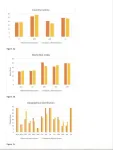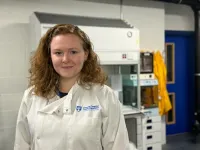This innovative approach, which combines a novel procedure known as ReCET (Re-Cellularization via Electroporation Therapy) with semaglutide, resulted in the elimination of insulin therapy for 86% of patients.
Globally, T2D affects 422 million people, with obesity recognised as a significant risk factor.2,3 While insulin therapy is commonly used to manage blood sugar levels in T2D patients, it can result in side effects such as weight gain and further complicate diabetes management. A need therefore exists for alternative treatment strategies.
The first-in-human study included 14 participants aged 28 to 75 years, with body mass indices ranging from 24 to 40 kg/m². Each participant underwent the ReCET procedure under deep sedation, a treatment intended to improve the body’s sensitivity to its own insulin. Following the procedure, participants adhered to a two-week isocaloric liquid diet, after which semaglutide was gradually titrated up to 1mg/week.
Remarkably, at the 6- and 12-month follow-up, 86% of participants (12 out of 14) no longer required insulin therapy, and this success continued through the 24-month follow-up. In these cases, all patients maintained glycaemic control, with HbA1c levels remaining below 7.5%.
The maximum dose of semaglutide was well-tolerated by 93% of participants, one individual could not increase to the maximum dose due to nausea. All patients successfully completed the ReCET procedure, and no serious adverse effects were reported.
Dr Celine Busch, lead author of the study, commented, “These findings are very encouraging, suggesting that ReCET is a safe and feasible procedure that, when combined with semaglutide, can effectively eliminate the need for insulin therapy.”
“Unlike drug therapy, which requires daily medication adherence, ReCET is compliance-free, addressing the critical issue of ongoing patient adherence in the management of T2D. In addition, the treatment is disease-modifying: it improves the patient’s sensitivity to their own (endogenous) insulin, tackling the root cause of the disease, as opposed to currently available drug therapies, that are at best disease-controlling.”
Looking ahead, the researchers plan to conduct larger randomised controlled trials to further validate these findings. Dr Busch added, “We are currently conducting the EMINENT-2 trial with the same inclusion and exclusion criteria and administration of semaglutide, but with either a sham procedure or ReCET. This study will also include mechanistic assessments to evaluate the underlying mechanism of ReCET.”
END
Notes to Editors
For further information or to arrange an expert interview, please contact media@ueg.eu.
We kindly ask that a reference to UEG Week 2024 is included when communicating any information within this press release.
Key terms Defined
The ReCET procedure is an endoscopic treatment that employs electroporation to ablate the duodenal mucosa. Electroporation creates small, irreversible holes in the cell membranes, leading to apoptosis, or natural cell death. This method can be precisely controlled for depth and avoids generating heat, thereby preventing damage to the deeper wall layers—a common challenge with standard endoscopic ablation techniques. Importantly, this treatment enhances the body’s sensitivity to endogenous insulin, although the precise mechanism behind this effect remains under investigation.4
Type 2 diabetes (T2D) is the most prevalent form of diabetes, characterised by elevated blood sugar, or glucose, levels. In healthy individuals, the hormone insulin facilitates the transfer of glucose from the bloodstream into cells, where it is used for energy. However, in individuals with T2D, the body’s cells become resistant to insulin, resulting in persistently high blood glucose levels and inadequate energy absorption. This can lead to symptoms such as fatigue, excessive thirst, frequent urination, blurred vision, and constant hunger. If left untreated, prolonged high blood glucose levels can lead to severe complications, including kidney disease, gum disease, heart attack, or stroke. 5
About the Author:
Celine Busch graduated with a degree in Medicine from the University of Amsterdam in December 2020. She started her PhD in 2021 under the supervision of professors Jacques Bergman and Max Nieuwdorp. Her research focuses on endoscopic duodenal ablation as a treatment for type 2 diabetes. Celine aims to become a gastroenterologist.
About UEG:
Founded in 1992, United European Gastroenterology (UEG) is the leading non-profit organisation for excellence in digestive health in Europe and beyond with its headquarters in Vienna. We improve the prevention and care of digestive diseases in Europe through providing top tier education, supporting research and advancing clinical standards. As Europe’s home for multidisciplinary gastroenterology, we unite over 50,000 engaged professionals from national and specialist societies, individual digestive health experts and related scientists from all fields. With our innovative online platform, the ‘myUEG Community’, we enable digestive health professionals from across the globe to connect and benefit from a plethora of outstanding free resources and educational activities. Our offers include UEG Week, our annual congress, online and face-to-face educational experiences, research support, a scientific journal and a range of opportunities in the form of fellowships and grants. We provide numerous guidelines, standards and quality improvement initiatives and campaign at the European level to ensure continued resources for research into digestive health while working closely with patient organisations.
Find out more about UEG’s work by visiting: www.ueg.eu
References:
Busch, C.B.E, et al. Durable effects of duodenal ablation using electroporation combined with semaglutide to eliminate insulin therapy in patients with type-2 diabetes; the 24-month results. Presented at UEG Week 2024; 14 October 2024; Vienna, Austria.
World Health Organization (WHO). Diabetes. Retrieved from: https://www.who.int/health-topics/diabetes#tab=tab_1
Diabetes UK. Diabetes Risk Factors. Retrieved from: https://www.diabetes.org.uk/diabetes-the-basics/types-of-diabetes/type-2/diabetes-risk-factors
Mayo Clinic. (2024). Researchers study novel endoscopic therapy for type 2 diabetes. Retrieved from: https://www.mayoclinic.org/medical-professionals/digestive-diseases/news/researchers-study-novel-endoscopic-therapy-for-type-2-diabetes/mqc-20563134#:~:text=ReCET%20is%20nonthermal%20procedure%20that,with%20regenerated%20metabolically%20active%20cells.
Medical News Today. (2024). Diabetes types and treatments. Retrieved from: https://www.medicalnewstoday.com/articles/323627 END



